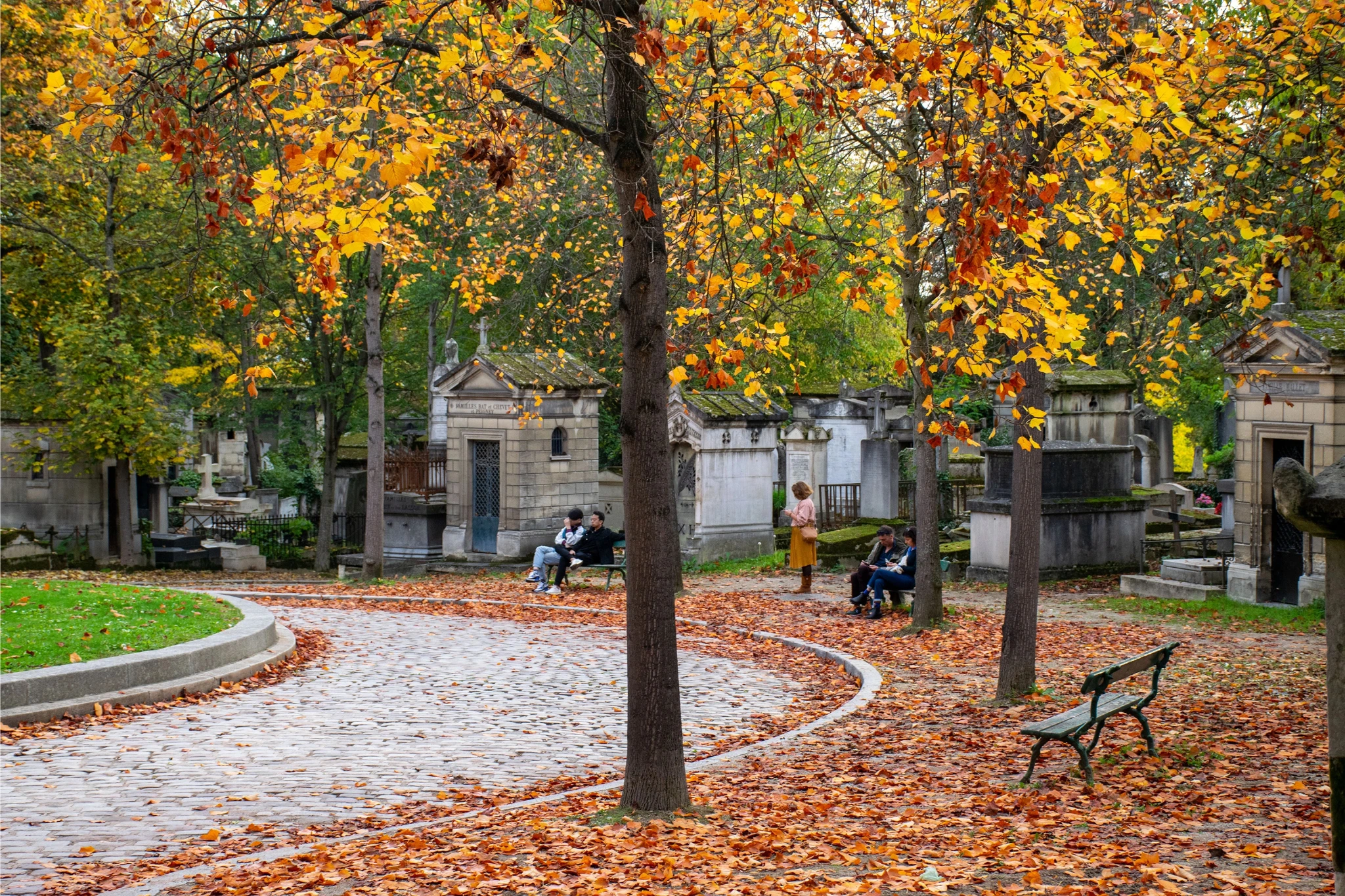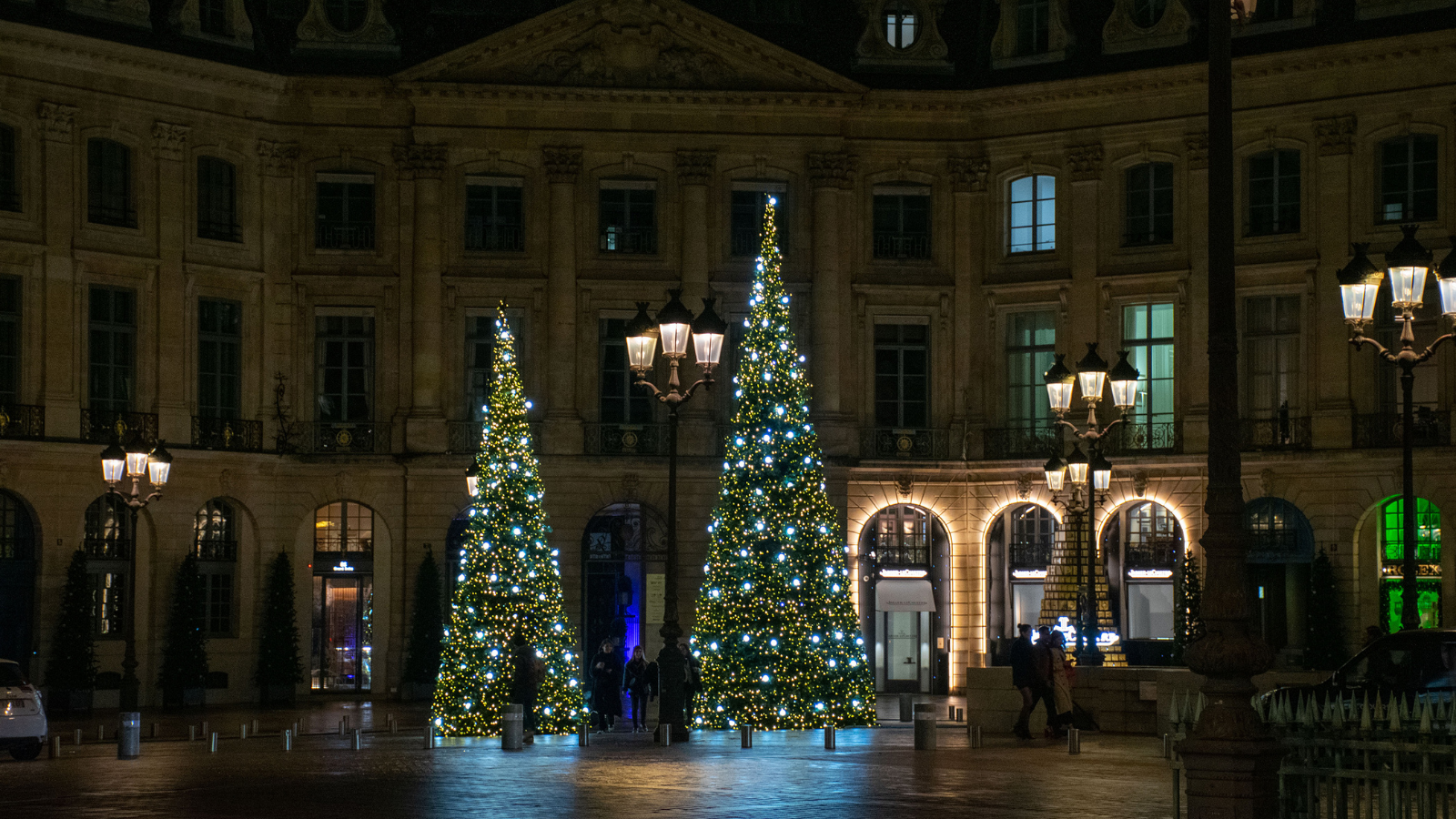Hidden within the 20th arrondissement of Paris, The Père Lachaise cemetery is home to many renowned celebrities and infamous writers, while also serving as a park and green space in the local neighborhood.
If you’ve ever wondered who is buried at Père Lachaise or what are the most famous graves to visit, this walk is for you.
So come along with me — through this article (and maybe one day in person) — as we wander the peaceful paths of Père Lachaise. Together, we’ll discover why people visit Père Lachaise Cemetery year after year: to pay tribute to icons like Jim Morrison, Edith Piaf, and Oscar Wilde; to admire the beauty of its tombs; and to feel that unmistakable mix of melancholy and magic that only Paris can offer.
Writers and Poets
Oscar Wilde’s Lipstick Kisses
The 19th century writer Oscar Wilde has become a symbol of artistic genius, queerness, and defiance against social norms. As a tribute and spontaneous act of affection and solidarity, fans began leaving kisses on the stones. The stone quickly became covered by lipstick stains, however a glass barrier had to be put up because the chemicals of the lipsticks where eroding the stone. Today, fans still leave messages on the glass.

Victor Noir’s Tomb (the fertility statue)
Victor Noir was a journalist for the newspaper La Marseillaise in 19th century Paris. His tomb is a bronze statue of Victor. The statue is infamous for the distinctive bulge that the artist chose to include under Victor Noir's belt. It is believed that touching the statue bring love, fertility, or even a husband within a year. This provocative legend became so popular that the bronze has now eroded and changed color!
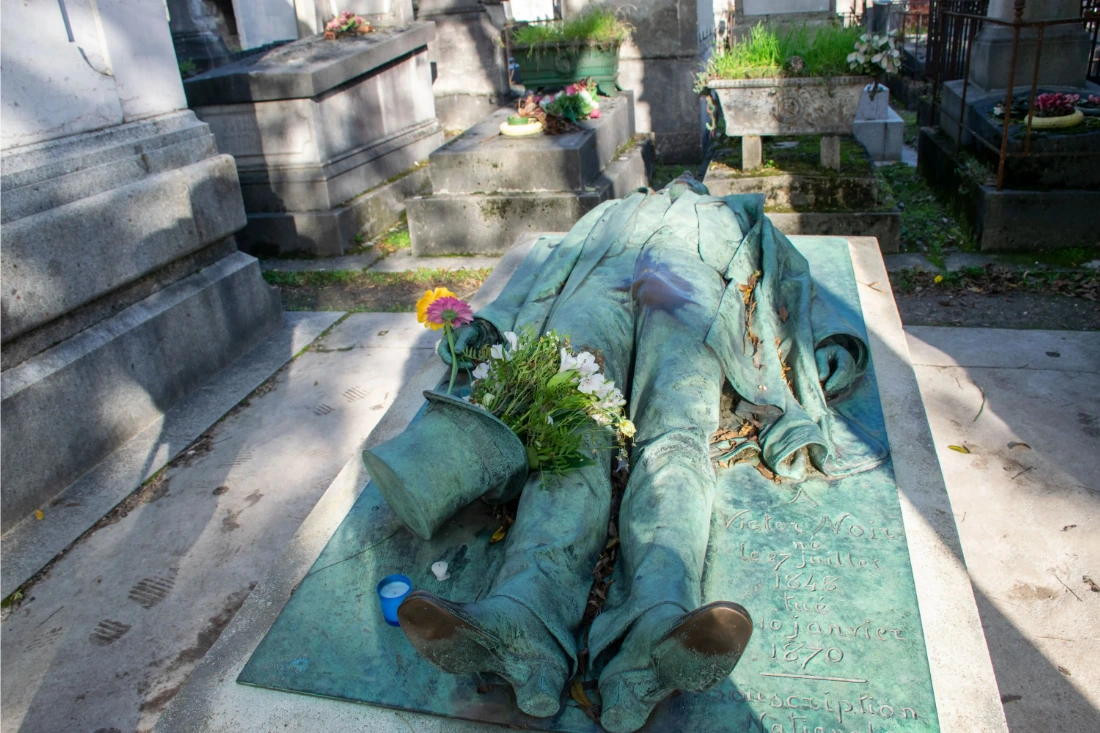
Molière and La Fontaine
The remains of those two famous writers of the 17th century were transferred to the Père Lachaise. Why?
In the early 1800s, Paris’s inner-city cemeteries were overcrowded and considered a public health hazard. This is when the Père Lachaise cemetery was created in the outskirts of Paris, in what is now the 20th arrondissement. To convince Parisians to bury their loved ones further away, the remains of famous figures like the writers Molière or La Fontaine got transferred to this cemetery, making the place more prestigious.
Musicians and composers
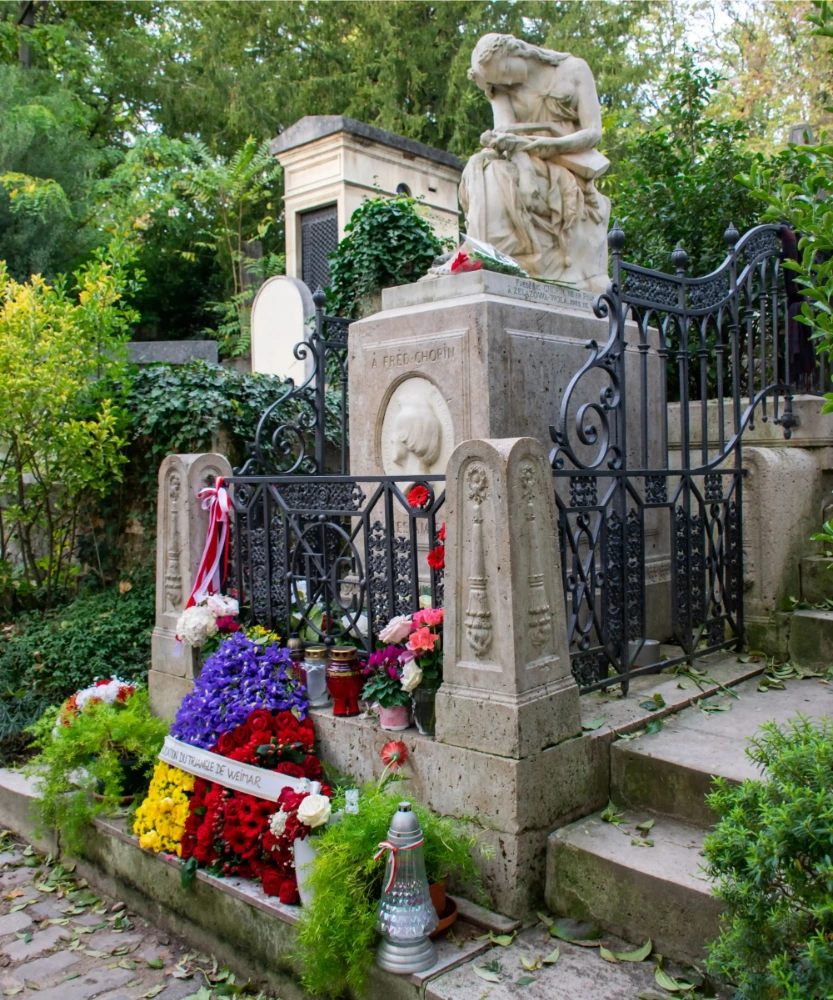
Chopin
Frédéric Chopin’s tomb at Père Lachaise is one of the most visited and beloved in the entire cemetery — elegant, emotional, and deeply symbolic of both his music and his Polish heritage.
While Chopin’s body lies in Paris, his heart is buried in the Church of the Holy Cross in Warsaw, Poland. It was his wish for his heart to be buried in his native country, so his sister smuggled it out of Paris hidden inside a jar of cognac. This act became one of Poland’s most cherished symbols of national pride.

Edith Piaf
Édith Piaf’s tomb at Père Lachaise is one of the cemetery’s most touching — modest and intimate, yet constantly surrounded by flowers and tributes from fans all over the world.
Piaf’s funeral in 1963 was enormous — over 40,000 people followed her casket through the streets of Paris, and the Archbishop of Paris refused to officiate because of her “sinful life.” Yet crowds at Père Lachaise sang L’Hymne à l’amour as she was buried, making it one of the most emotional farewells in French history.
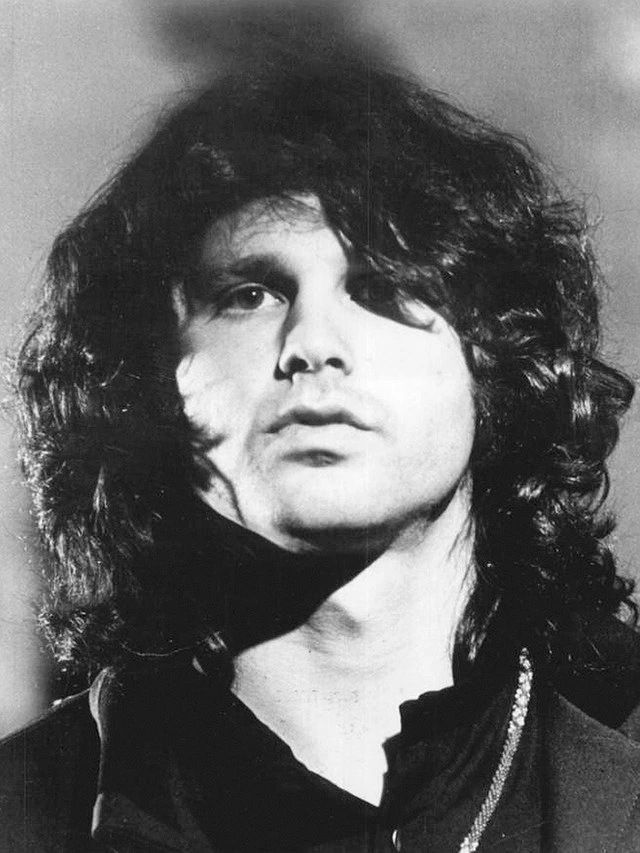
Jim Morrison
Jim Morrison’s tomb is arguably the most famous — and infamous — grave in Père Lachaise. Lead singer of The Doors and icon of 1960s rock, Jim Morrison came to Paris seeking peace and inspiration. His sudden death at 27 turned him into a legend, and his simple tomb at Père Lachaise remains one of the cemetery’s most visited and mysterious sites.
From the 1970s onward, his grave has become a place of remembrance. Fans come from all over the world to pay tribute, leaving things that represents the poems, bottles of whiskey, cigarettes, joints, and records.
Painters and Sculptors
Delacroix
Most known for his painting Liberty Leading the People (28 July 1830), Eugène Delacroix is one of the biggest french painter of the 19th century. He is recognized for his vibrant colors and dramatic compositions. Though passionate in his art, he lived a quiet life, and his elegant tomb at Père Lachaise reflects that same sense of refinement and dignity.

Géricault
Most known for his painting The Raft of the Medusa (1818 / 1819), Géricault was a pioneer of Romantic art, capturing human struggle and emotion with striking realism. His tomb is one of the most striking of the cemetery: above Géricault’s tomb is a life-sized bronze statue of the artist himself lying down above his most famous painting, with a paintbrush on his right hand, and a canva in his left.

Conclusion
Père Lachaise is not just a cemetery — it’s one of Paris’s most unforgettable walks. Beyond its gates lies a world where history, art, and emotion intertwine beneath the trees. Each path invites discovery: the music of Chopin, the words of Wilde, the spirit of Piaf, and the mystery of Morrison all waiting quietly among the tombs.
So next time you’re in Paris, make a detour — step away from the crowds of the Louvre or the bustle of Montmartre, and come wander where the legends rest. Whether you stroll alone, map in hand, or join a guide like myself who knows the hidden corners and stories, you’ll find that Père Lachaise is not a place of endings, it’s a journey through the soul of Paris itself — haunting, poetic, and deeply alive.


